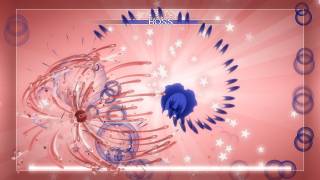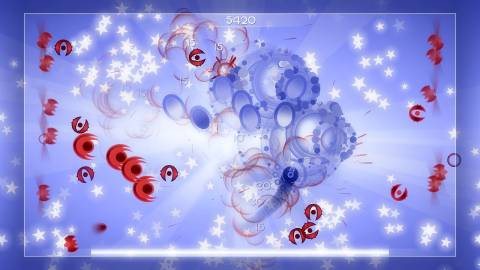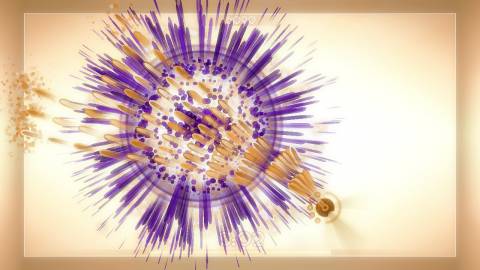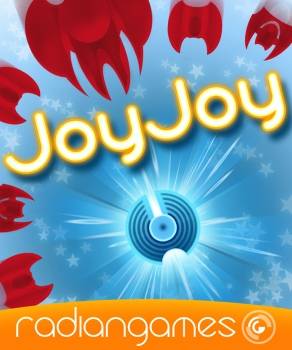Overview

Upon its initial release, JoyJoy was entered into the 2010 Dream.Build.Play contest. It won sixth place, beat out by Duality ZF, Beat Hazard, Prismatic Solid, A.R.E.S.: Extinction Agenda, and Lumi. However, the build entered into the competition was an incomplete build.
Soundtrack
When the soundtrack was first released, it was available for free on the Radiangames website. As the brand has expanded, there are now six Radiangames available, so a new form of distribution was necessary. Each game's soundtrack is available on Bandcamp currently, for the price of $1.99 per soundtrack.- JoyJoy (1:43)
- Blue (4:21)
- Aqua (4:11)
- Purple (4:03)
- Finale (0:57)
Gameplay

In terms of core gameplay, JoyJoy is fairly similar. Players progress through the game's 25 waves in Campaign mode, periodically fighting bosses. Assisting in vanquishing these levels are six different weapons: Vulcan, Hunter, Lancer, Spread, Impulse, and Reflex. Each of these weapons need to be picked up as the game progresses (weapon upgrades for each of these are also periodically available, gradually upgrading them to "Ultimate" status).
Other items and abilities are also available. Collecting stars that the enemies drop eventually activates one of two items: either the Burst or Vortex. Burst automatically fires out at nearby enemies, while Vortex traps all on screen enemies within it. JoyJoy does have a bomb system, although rather than picking up traditional bombs, each weapon has a "bomb." By holding down the right trigger and then releasing, lasers from that particular weapon fire out in all directions, eradicating most enemies.

Other than the main Campaign mode, JoyJoy also includes a Challenges mode. Here, there are six different challenges to attempt at. These typically include restricting weaponry, specific types of enemies, and/or boosted enemy abilities. Additionally, the sixth challenge is a Boss Rush, where the player faces every boss fought throughout the Campaign mode. These challenges retain the game's signature customization and still allow the player to customize difficulty and modifiers.

 Xbox 360 Games Store
Xbox 360 Games Store iPhone
iPhone iPad
iPad Android
Android Ouya
Ouya






